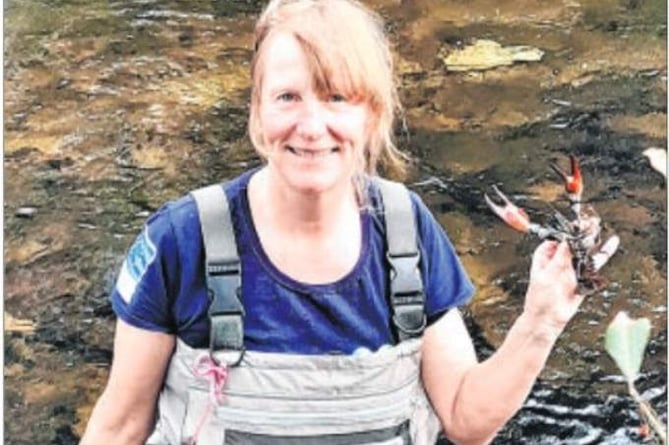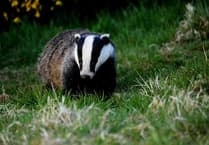ELECTROCUTION of unwanted plants and sterilisation of male signal crayfish are two ground-breaking techniques showing early promise in Exmoor National Park as part of a three-year programme aimed at ridding the moor of non-native invasive species and which is set to end next spring.
The three-year ENNIS project, started in 2019, and funded by the EU Agricultural Fund for Rural Development, has supported some of the UK’s first trials of state-of-the-art Rootwave technology, using electricity to zap the roots of problem plants thus avoiding the need for chemical herbicides.
The approach is being tested alongside an equally innovative first-in-UK trial sterilising and removing male signal crayfish, using a specialised ‘artificial refuge trap’, which mimics the crayfish’s natural home.
With the help of volunteers, this has so far resulted in 25,000 crayfish being caught since the trial began in 2015, including 4,000 males returned following sterilisation, with catch rates decreasing since 2017.
Crayfish researcher Nicky Green said trials in the River Barle are showing early promise. “Over the last six years the average size of the crayfish has actually increased quite a lot. So that tells us that we’re catching a lot of the smaller animals, the juveniles, which is what we are aiming to do.
“Although it’s good news it is not clear whether these changes are due to the sterilisation or the trapping, so work is needed to confirm this”.
The ENNIS project is also building on decades of work to limit the spread of Japanese and Himalayan knotweed in the national park, with an area the size of six Wembley football pitches now under control thanks to ongoing collaboration between the park authority, the Environment Agency, Natural England and the National Trust, plus the support of landowners.
Chris Pedlar, of the Environment Agency, said: “In Lynmouth 25 years ago, which is roughly when we started, everything was six-foot high, wall-to-wall knotweed.
“We’re in a situation now where we’ve got native species back. It’s actually very difficult to find knotweed now. It’s a success but we’ve still got more work to do.”
About ten-12 new non-native species are established every year in Britain, according to the GB Invasive Species Strategy, with 12 per cent going on to cause serious adverse impacts, particularly on native woodlands and freshwater habitats like those on Exmoor.
It is one of five major threats identified in the latest 2019 State of Nature report, with concern that climate change will fuel the problem.
A spokesman for the project said: “The list of invasive species threatening Exmoor’s fragile ecosystems grows, with species such as Japanese and Himalayan knotweed, montbretia, skunk cabbage and signal crayfish among those now requiring ongoing management.
“This makes it a race against time to secure further funding for this vital control work to continue on Exmoor, and to minimise the costs of ongoing management, estimated to cost the British economy £1.8 billion a year.”
Ali Hawkins, the authority’s wildlife conservation officer, who is overseeing the project, said: “I think the legacy of the project is a really positive one. Thanks to this funding we now own our own Rootwave machine and have a growing body of evidence to share with others the practicalities of this promising technology.
“We are also seeing fantastic results from our crayfish studies that will ultimately feed into control projects worldwide.
“Of course, none of this would be possible without our amazing volunteers, who have collectively donated nearly 3,000 hours of their time to the project, alongside invaluable support we have received from over 300 landowners and homeowners.
“With more funding we would love to continue the work, but we are very grateful to have had this opportunity to focus on invasives and make a real difference working with a really fantastic team.”




